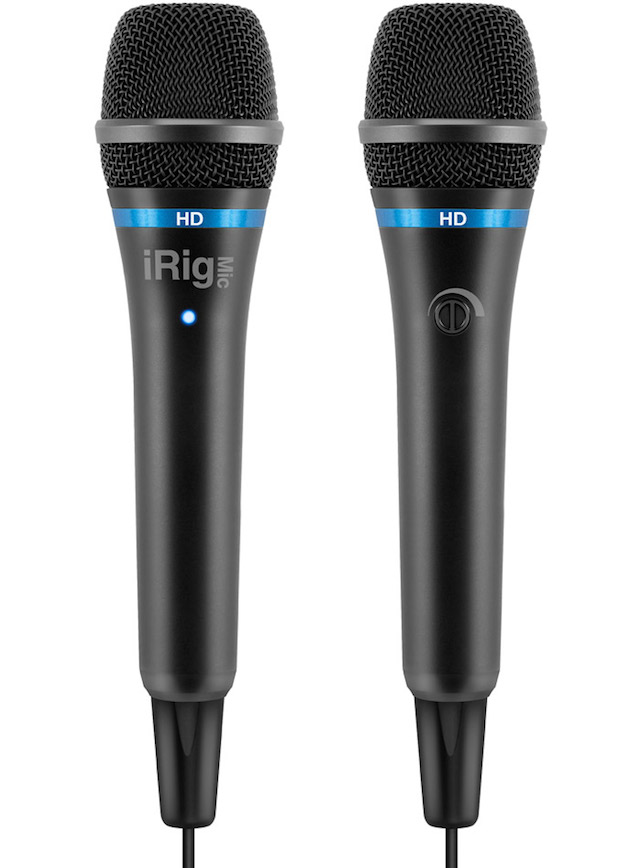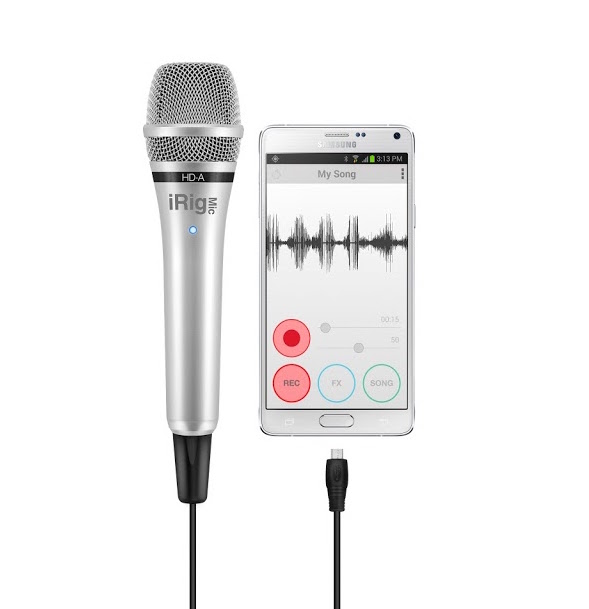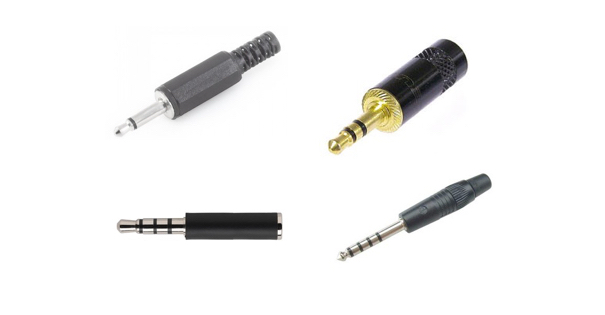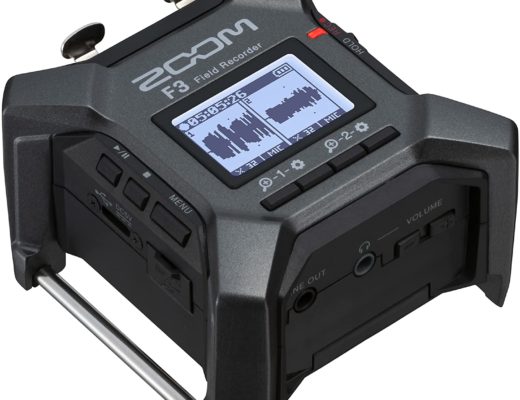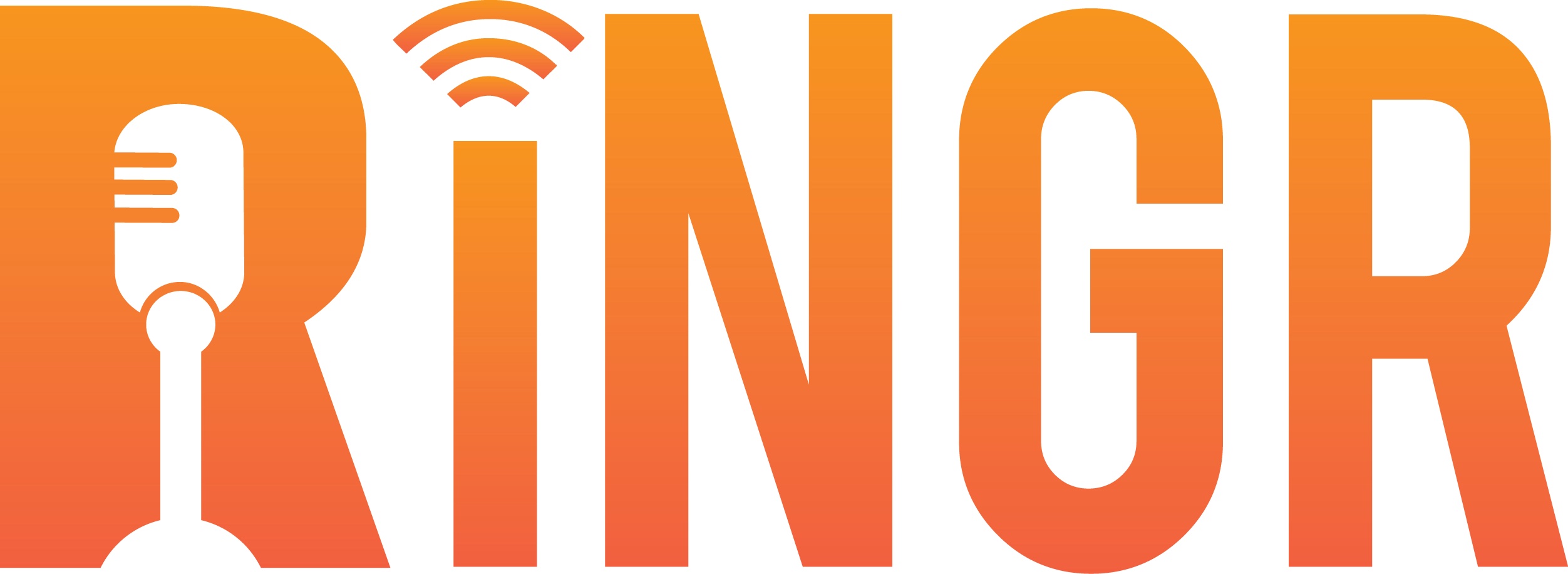
For years, many audio storytellers have counted on Skype to create remote audio recordings with guests and co-hosts. In fact, I have written several articles about solutions to do that with a Mac computer. However, Skype (a Microsoft product since 2011) has become unacceptably inconsistent with Skype’s API (application programming interface), which has meant that third-party apps that have used the API have lost, then regained, and then lost compatibility again. In this article, I’ll cover RINGR, a paid service that will give you better audio quality (including the option of isolated 48 kHz tracks), less stress, more reliability and more flexibility than Skype for your remote recorded audio interviews.
An automated double ender
The term double ender has been used for several years in the jargon of audio producers who have used Skype for remote pre-recorded interviews or co-hosts. Double ender has meant that in order to have “local” recording quality for each individual involved (not encumbered by VoIP’s degradation or occasional glitches), each participant would record her or his own voice locally. Then, the participant(s) not involved in editing would send the isolated audio track to the person in charge of editing, so that she or he could sync it will all of the others. All of this tedious process is designed to assure that Skype’s (or any other Internet telephony app’s) will not degrade the final recorded audio quality.
RINGR essentially offers an automated double ender with barely any human intervention, since each participant gets recorded locally. After the recording, the audio file is automatically uploaded to Ringr’s server, which automatically syncs and processes the two files as desired. As the owner of a RINGR account, you get to specify in advance the format desired to receive the end product. If you are a Premium user of RINGR, you get the option of requesting independent lossless FLAC files at up to 48 kHz. See my article All audio production & distribution should go 48 kHz. Learn why. You’ll learn that for spoken voice, it’s much more about the compatibility than with the quality.
FLAC? What the FLAC?
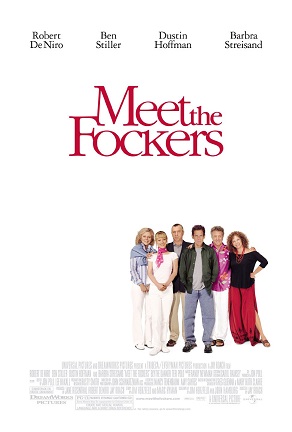
I really don’t know whether the audio production of the 2004 film Meet the Fockers involved use of the FLAC audio format or not. If any reader of this article was involved with the production of Meet the Fockers and knows the answer, please let me know in the comments below.

According to Wikipedia:
FLAC (Free Lossless Audio Codec) is an audio coding format for lossless compression of digital audio, and is also the name of the reference codec implementation. Digital audio compressed by FLAC’s algorithm can typically be reduced to 50–60% of its original size and decompress to an identical copy of the original audio data. FLAC is an open format with royalty-free licensing and a reference implementation which is free software. FLAC has support for metadata tagging, album cover art, and fast seeking. Since the introduction of FLAC in 2001, the number of products and services using the format has increased. It is generally supported by more hardware devices than competing lossless compressed formats that may have intellectual property constraints.
We can think of FLAC as a free lossless audio códec and format with the quality of uncompressed WAVE or AIFF (if recorded with the same sampling rate and resolution), but consumes about 50-60% less space on our hard drive, and less bandwidth when uploading or downloading. FLAC is also free of royalty payments.
Even though today, my audio shows are currently distributed with lossy compressed audio (i.e. MP3), I never want to use a lossy-compressed version during the production phase, because I know that every generation of a lossy códec will reduce the quality and introduce additional artifacts. That’s why I personally would only consider using RINGR’s Premium option, since it’s the only one that offers a lossless códec (FLAC). In addition, RINGR’s Premium option is the only one that offers 48 kHz and independent tracks.
Why independent tracks?
For advanced audio producers, having each individual on a separate track gives us much more control in post production, i.e.:
- Independent equalization of each voice, if appropriate.
- Independent compression of each voice, if appropriate.
- Capability of eliminating a cough from one voice without affecting the other.
- Crossgating to compensate for bleed, as explained in more detail ahead in this article.
Having said that, for novice audio producers, RINGR certainly offers the option of receiving an already combined recording.
Platforms where you can use RINGR
RINGR currently offers free apps for Android (via the Google Play Store) and iOS: iPhone/iPad/iPod Touch (via iTunes and the iOS AppStore). In those stores, the application is called RINGR Mobile. The app is truly foolproof.
RINGR currently works on the desktop directly in two browsers, without the need of any app at account.ringr.com. Those two browsers are Google Chrome or Mozilla Firefox. Even though the company doesn’t officially mention it on the website, I was even able to use RINGR with Chrome on a Chromebook, and that’s where I made my first unofficial tests with Jorge Mezéi of Plurimedios in Buenos Aires, Argentina.
During those first unofficial tests, I used the same digital iRig Mic HD-A microphone I have covered in several past articles in ProVideo Coalition magazine.
Quick summary of the iRig Mic HD and iRig Mic HD-A
iRig Mic HD (iOS package version) from IK Multimedia (available in black or silver), reviewed here. Condenser cardioid, software negotiable between 44.1 and 48 kHz, up to 24-bit. Includes Lightning cable for modern iOS devices (iPhone/iPad/iPod Touch). See below for the classic Android package version.
iRig Mic HD-A (classic Android package version) from IK Multimedia (available silver), reviewed here. Condenser cardioid, software negotiable between 44.1 and 48 kHz, up to 24-bit. Includes a USB OTG cable for compatible Android devices that use a Micro USB port to Micro USB.
Important note: If your Android is a newer model with the USB-C port (i.e. Nexus 5x, Nexus 6p, Pixel or Pixel XL), you will need to purchase a direct Micro USB to USB-C cable which will work with either of the above versions of the iRig Mic HD. I have tested it personally, and it works great, with no adapters required.
See my related article TS/TRS/TRRS/TRRRS: Combating the misconnection epidemic
For my first official RINGR interview that I published in episode 21 of my CapicúaFM show (which you can play here:
I used that same digital microphone connected to my Google Pixel XL (Android) smartphone via a special cable from Micro USB to USB-C, and with the same standard isolating TRS stereo headphones (not TRRS).

The microphone was mounted on the Heil PL-2T flexible arm.
Please note that RINGR currently doesn’t support digital mics on Android officially. I was lucky to discover that this combination indeed works perfectly. Your mileage may vary, depending on your Android device, OS version, etc.
RINGR’s six simple steps
- SCHEDULE: The producer/interviewer sends an email invitation via RINGR with a custom message and scheduled call time.
- CONNECT: At the scheduled time, all participants connect using the RINGR Mobile app or a desktop browser. (No other app is involved.)
- RECORD: Each device records high quality audio while the participants converse via RINGR’s built-in Voice-over-IP (VoIP). This VoIP is not used for the recording at all; It’s just for the two participants to hear one another.
- UPLOAD: Once the call is complete, the high quality raw audio files is automatically uploaded to the RINGR server.
- RINGR automatically synchronizes, balances, and (optionally) merges the individual tracks.
- DOWNLOAD: A download link is emailed to the host, who receives the desired independent files (Premium only) or combined (all users).
My workflow, results and conclusions
The independent RINGR FLAC 48 kHz files are very clean, as expected, considering that they were all made locally at each end, one in the United States, and the other in Spain. I already described my setup for the first interview, as indicated above. The first official interviewee was Hugo Ramallo García located in Spain. Hugo is the manager of CTL’s Spain office. CTL is a US-based Chromebook manufacturer, and here you’ll see my review of one of their Chromebook models.
Unlike my end (where I wore an isolating headset), Hugo used his iPhone 7 by itself. At his end of the recording, there was some bleed of my voice, which was likely due to it coming out of his iPhone 7 speaker and being picked up by his iPhone’s built-in microphone. This situation of bleeding in the case of someone’s voice being picked up by another person’s microphone is something that I have covered in several past articles about automatic mixers for live situations. For this type of scenario, I use Auphonic’s renowned online multitrack crossgate service, since it can do in a few minutes what might take 3 days to do manually. So more specifically, after evaluating them, I uploaded the independent 48 kHz FLAC files to Auphonic.com, received a single crossgated mono 48 kHz WAVE file, and used that as my source material to edit in my still favorite editor for audio storytelling: Hindenburg Journalist Pro. (If I hadn’t had the bleed issue, I would have simply placed each independent file on a separate track in Hindenburg.)
I actually loved the capability of carrying out studio-quality interviews from my smartphone. I loved being free of Skype’s volatile API situation. I know that Hindenburg Journalist is now encouraging users to combine Skype (or other service) using a third-party middleware app, but I like RINGR’s simple approach, and the capability of doing it at either end on a smartphone, tablet or computer. My only concern was RINGR’s use of an AGC (automatic gain control). I observed that (especially on the interviewee’s end) there was excessive breathing, and wrote to ask whether RINGR is using an AGC. The official answer was: “We do have a light AGC feature that runs over the audio which, for now, doesn’t have an on/off switch for users. We are working to ensure that it works just enough to be effective without interfering too much.”
I have encouraged RINGR (for the Premium user) to add the option of no AGC and make the original recording at 48 kHz 24-bit. That way, even with a very conservative (i.e. lower level) recording, there will be enough latitude to normalize the recording later without the pumping of the AGC. (See my article Understanding 24-bit vs 16-bit audio production & distribution for details.)
For this time, I edited out the excessive breathing. For the future, I plan to try Waves’ DeBreath plugin to save time when editing. I still prefer using RINGR (rather than Skype) because of the consistent reliability and quality that is not volatile. I think the only time I’ll use Skype from here forward is when I have to call an organization on the telephone (using SKYPE-out) documentary style, without a prior plan to interview anyone. I am very glad that RINGR has become available. The next time I do an interview via RINGR, I will likely try it with some other microphone, just to experiment. Since pricing and offering may vary, rather than including them in this article, I’ll send you directly to RINGR.com for you to get your free 30-day trial of the Premium service.
It’s wonderful to know that there is a great service like RINGR that specializes in our desired niche, unlike Skype, which primarily exists for a completely different reason, and has become progressively less reliable for our use.
Upcoming articles, reviews, radio shows, books and seminars/webinars
Stand by for upcoming articles, reviews, and books. Sign up to my free mailing list by clicking here.
Si deseas suscribirte a mi lista en castellano, visita aquí. Si prefieres, puedes suscribirte a ambas listas (castellano e inglés).
Follow @AllanLTepper on Twitter.
Listen to his CapicúaFM show at CapicúaFM.com in iTunes or Stitcher.
FTC disclosure
As of publication time, there is no commercial relationship with RINGR INC, TecnoTur LLC, *ProVideo Coalition* or Allan Tépper. No manufacturer is specifically paying Allan Tépper or TecnoTur LLC to write this article or the mentioned books. Some of the other manufacturers listed above have contracted Tépper and/or TecnoTur LLC to carry out consulting and/or translations/localizations/transcreations. Many of the manufacturers listed above have sent Allan Tépper review units. So far, none of the manufacturers listed above is/are sponsors of the TecnoTur programs, although they are welcome to do so, and some are, may be (or may have been) sponsors of ProVideo Coalition magazine. Some links to third parties listed in this article and/or on this web page may indirectly benefit TecnoTur LLC via affiliate programs. Allan Tépper’s opinions are his own.
Copyright and use of this article
The articles contained in the TecnoTur channel in ProVideo Coalition magazine are copyright Allan Tépper/TecnoTur LLC, except where otherwise attributed. Unauthorized use is prohibited without prior approval, except for short quotes which link back to this page, which are encouraged!

Filmtools
Filmmakers go-to destination for pre-production, production & post production equipment!
Shop Now
